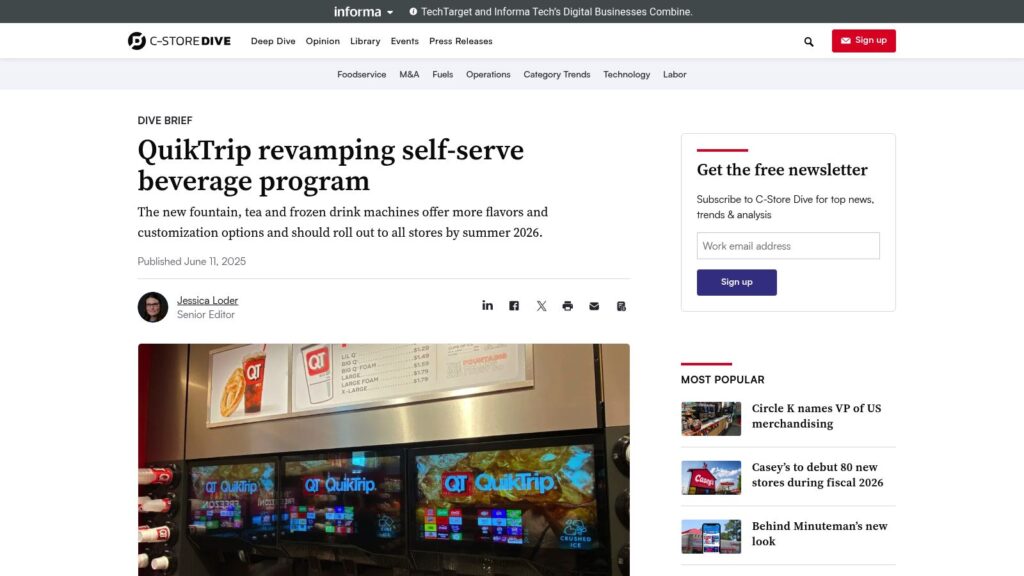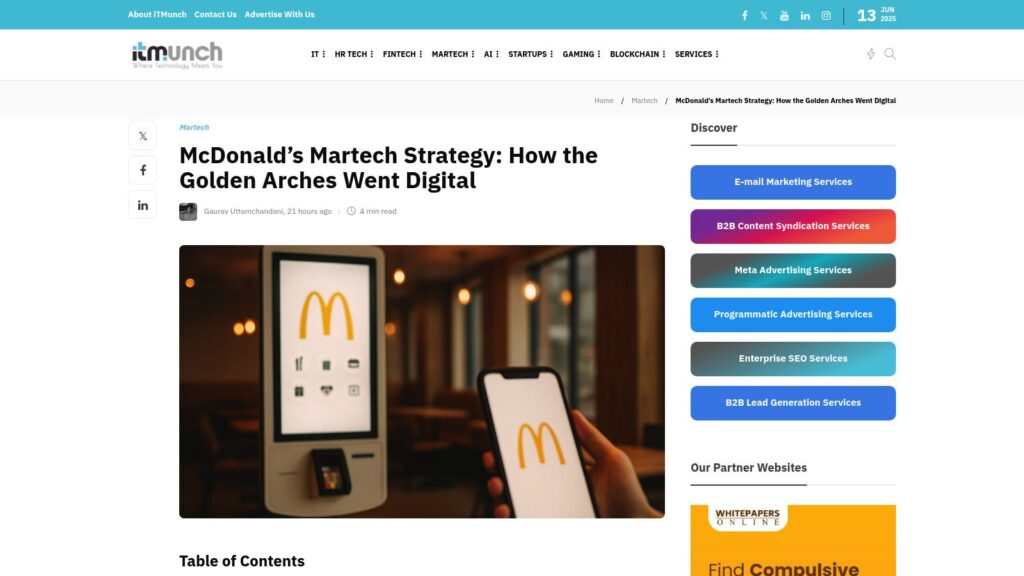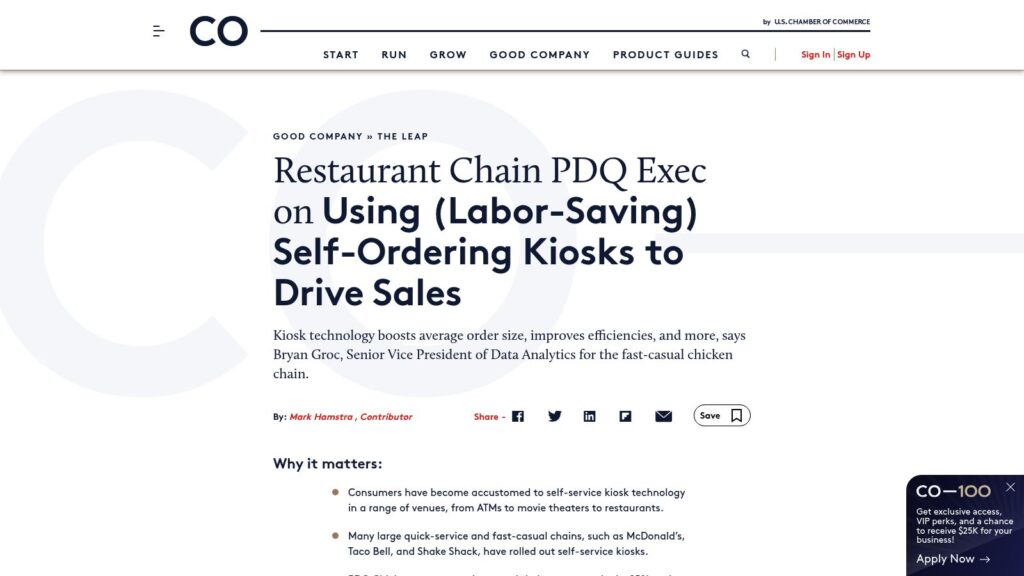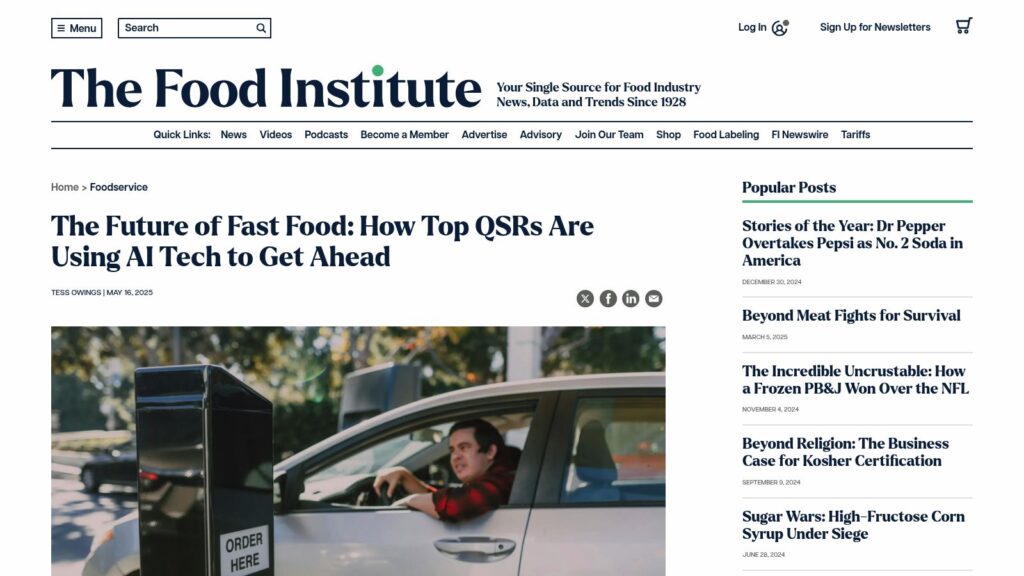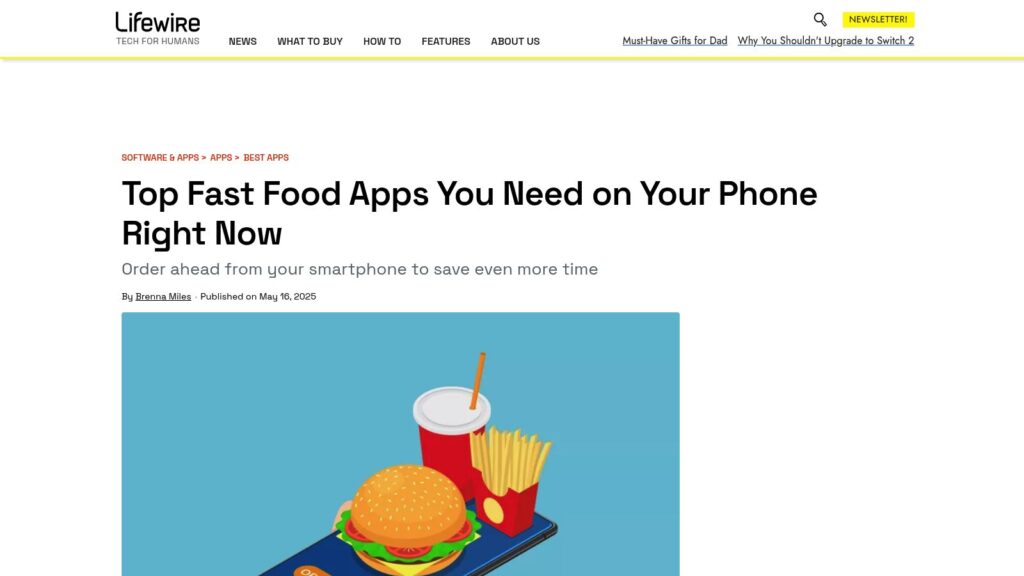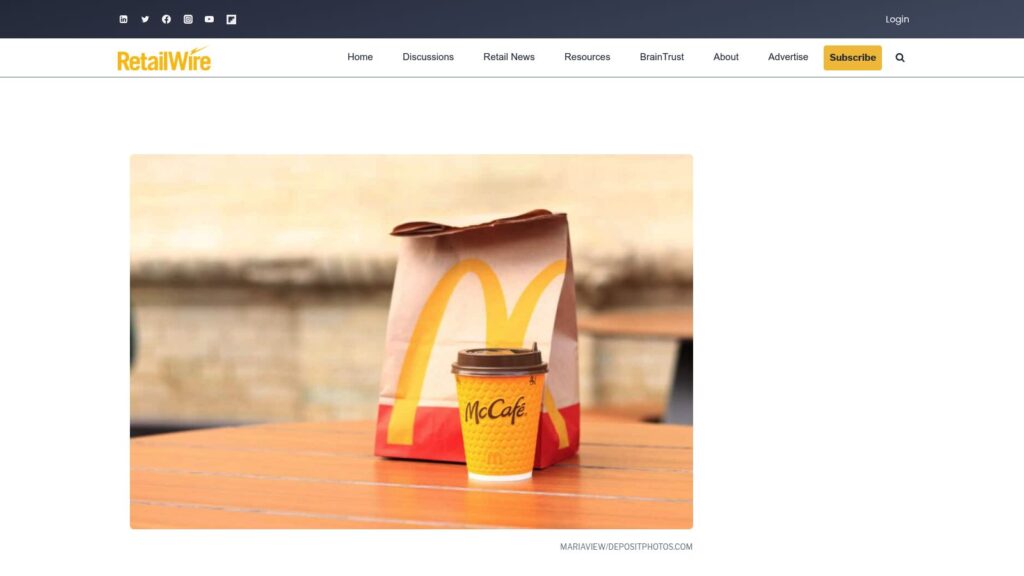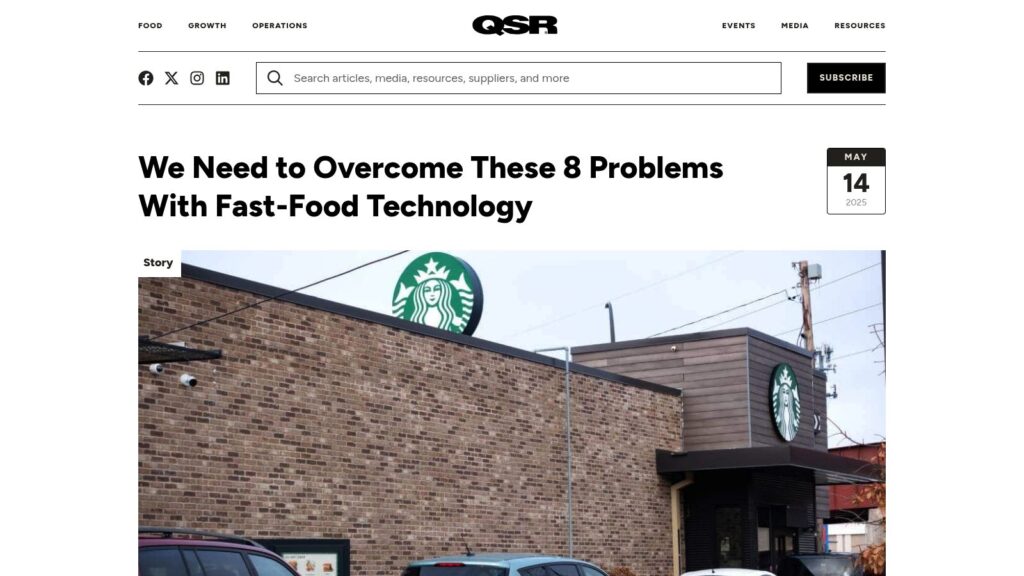QuikTrip Revamping Self-serve Beverage Program
QuikTrip is overhauling its self-serve beverage program, introducing new machines for fountain, tea, and frozen drinks to enhance flavor selection and customization. The rollout is expected to complete by summer 2026 across 21 states, targeting greater consistency and an impressive total of 40 drink options. The update reflects QuikTrip's ambition to become a leader in the premium beverage sector.
https://www.cstoredive.com/news/quiktrip-self-serve-beverage-program/750337/
